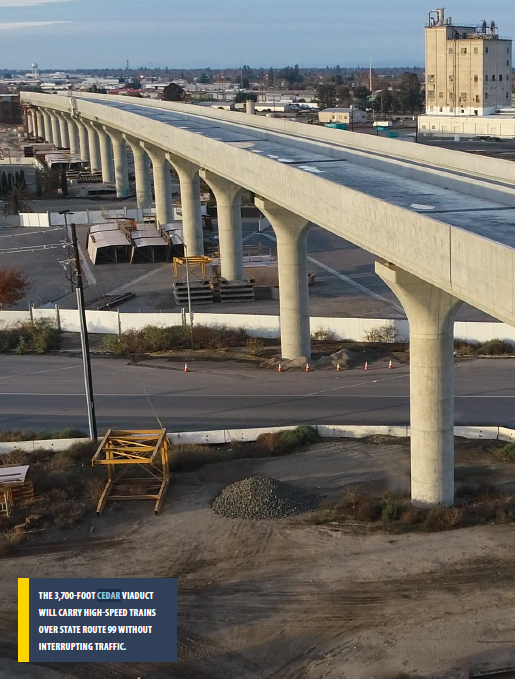Note: GJEL Accident Attorneys regularly sponsors coverage on Streetsblog San Francisco and Streetsblog California. Unless noted in the story, GJEL Accident Attorneys is not consulted for the content or editorial direction of the sponsored content.
The annual update on progress and planning for the California High-Speed Rail program includes more precise estimates of costs and an outside analysis of the program's feasibility.
Estimated costs for the project have risen over time, as tends to happen with projects of this magnitude. Currently the cost for the first segment in the Central Valley is estimated at around $20-23 billion, with most of that funding lined up as long as the federal government doesn't back out and cap-and-trade revenues remain high.
There has never been enough money in hand to fund the entire project in one go, so the plan has been to build it in pieces in a way that brings benefits as soon as possible, even before the project is completed.
As has been outlined in previous yearly updates and by Governor Newsom in his January budget speech, the first step will be to build the Central Valley portion of the project and connect that to existing services, which are being improved by separate efforts. The plan recommends focusing on a central spine from Merced to Bakersfield, with a hub at Merced connecting to the current San Joaquin trains to Sacramento and Oakland, and the Altamont Corridor Express trains to San Jose. Both of those services have planned improvements in the works.
In addition, Caltrain, which runs from San Jose to San Francisco, is becoming an electric train, partly with funding from the high-speed rail project.
An outside analysis of costs and projections of revenue and ridership was completed last year by DB Engineering, which is the U.S. arm of the firm that runs high-speed rail in Germany. Its conclusions, included in this update, recommend the focus on starting service in the Central Valley while continuing "bookend" investments--including the Caltrain electrification project--at both ends. One day, those investments would be used by high-speed rail, but until then they can provide immediate benefits such as more frequent service and less pollution by eliminating diesel engines.
That plan would be "the best option to increase ridership and get an operational segment up and running," says the report.
An idea that was discussed in the 2012 business plan seems to be getting some attention now. Shifting existing diesel intercity passenger trains onto newly built high-speed tracks would have the immediate benefit of reducing travel time in the Central Valley. Those current diesel engines could go as fast as 125 mph on the new rails. In addition, passenger trains would no longer have to share tracks with freight and could set their own schedules. While this interim idea wouldn't include the environmental benefits of cleaner engines, faster and more frequent service could help build ridership and reduce highway driving. Improving bus and train connections at both Merced and Bakersfield could shorten overall travel times further.
This would, according to the outside analysis, not only bring higher ridership but also "greater value for the public funding spent on operating intercity and regional rail services through the Central Valley."
The analysis found ridership would increase even assuming no change in service levels on existing connecting services. Other assumptions are that high-speed rail prices would be similar to current San Joaquin rail prices, and there would be regular hourly high-speed service.
The update says there is enough funding available now to complete the Central Valley portion, the "bookend" investments including a Merced connection, and environmental planning for entire San Francisco-to-Anaheim phase.
As noted by Ben Adler at Capital Public Radio, however, a bigger problem looms for the high-speed rail project, as well as for other matters in California: the federal administration just stopped doing any work on their end, freezing environmental reviews in addition to threatening to pull back funding.







